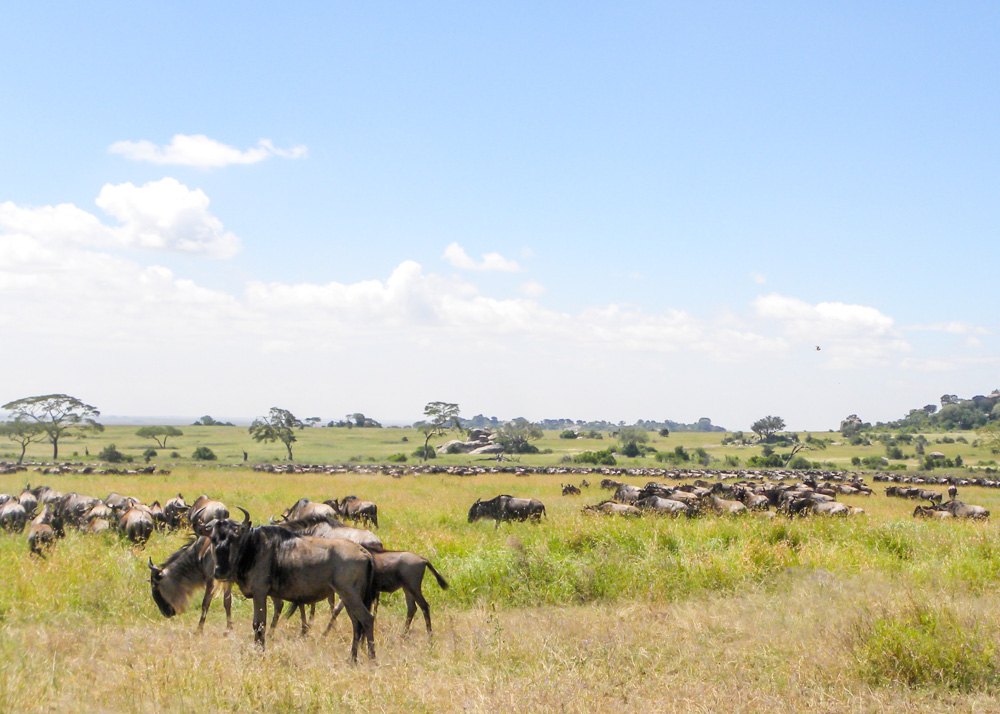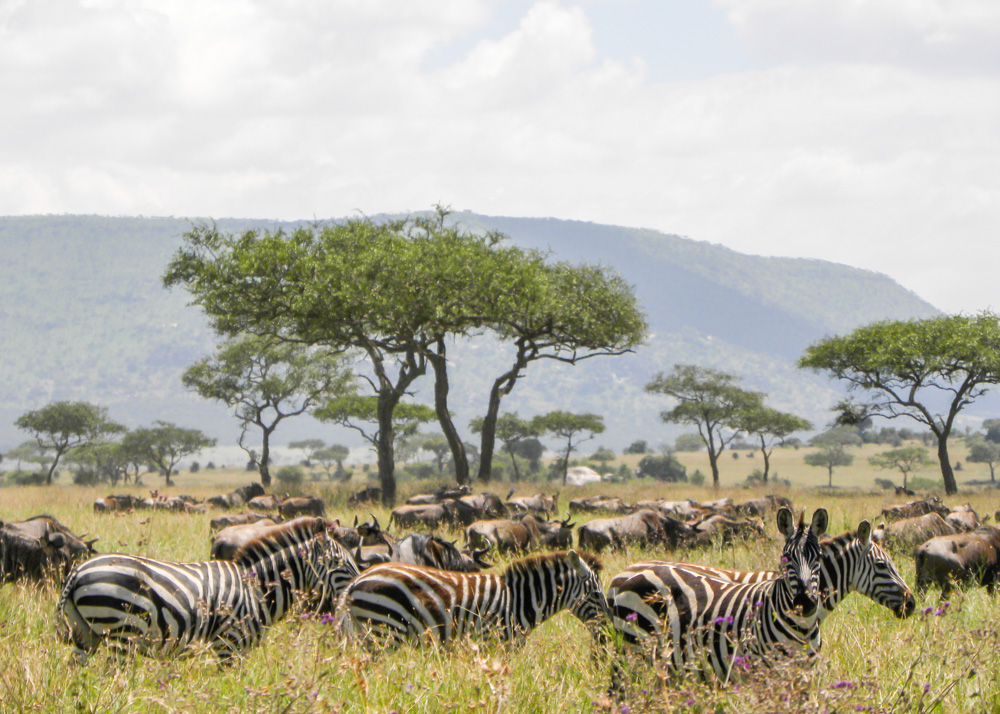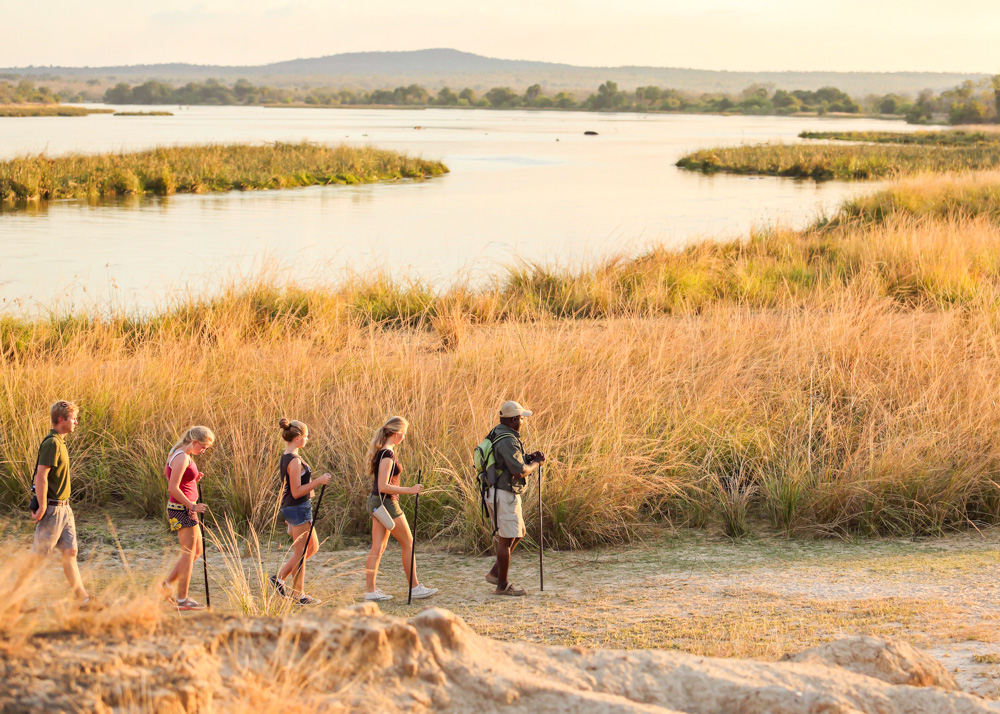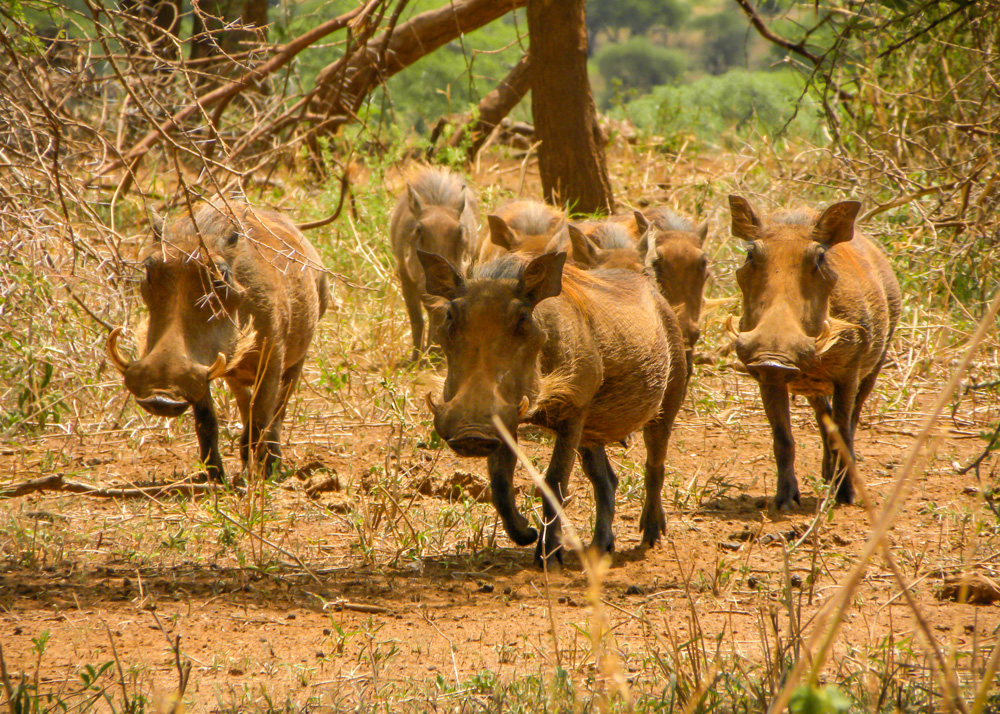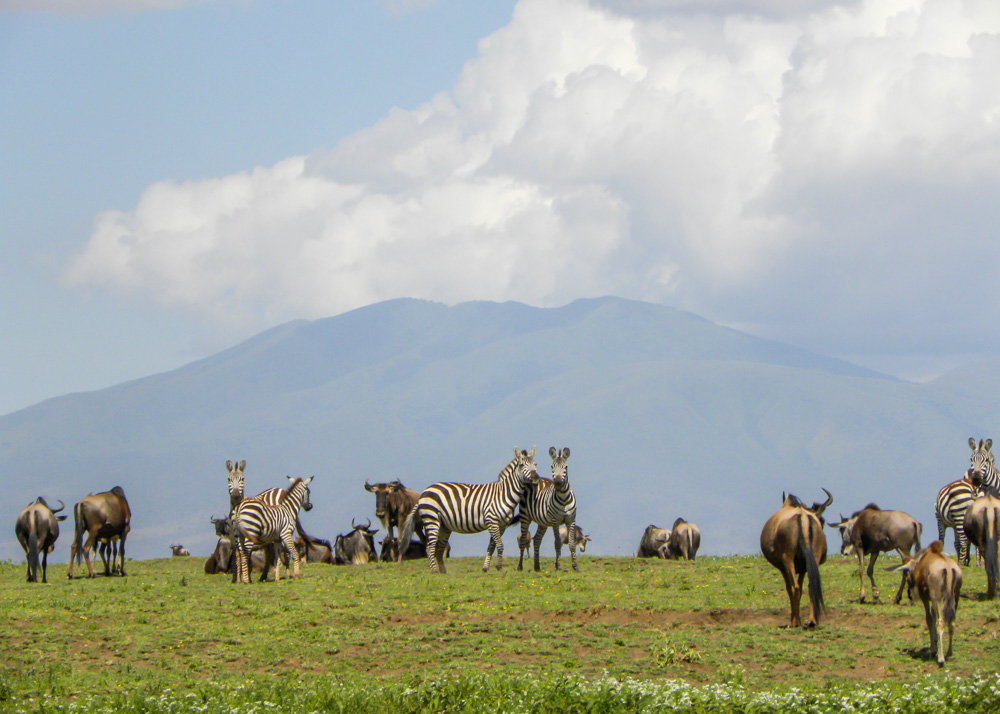Travelers fly thousands of miles each year in the hopes of witnessing what has been deemed The Greatest Show on Earth with no guarantee of actually witnessing the Great Migration firsthand.
The animals are always on the move, following the rains, constantly in search of a fresh food supply. While the dramatic river crossings documented on wildlife channels are the stuff of legend, they do not occur on demand. But, with a little luck and pre-trip planning there is a good chance that you will be able to spot the migration in full force!
While the saying “nothing in life is guaranteed” is never truer than in the Serengeti plains of northern Tanzania, there are actions you can take to increase your chances of seeing the Great Migration and ensuring the best safari possible, even if the migration eludes you.
Here are our tips for putting together the ultimate Great Migration safari:
- Travel with the right company
Choosing a safari provider with experience pays off! The Serengeti sprawls over 10,000 square-miles. A seasoned guide will know the park’s intricate road-system like the back of their hand. With knowledge on your side, you can visit the Serengeti’s nooks and crannies, unknown to other guests and devoid of the mass of vehicles flocking to see the migration.
A well-trained guide will also be able to clue you in to the subtle notations of wildlife in the bush. You will leave your safari with a wealth of knowledge of the local flora and fauna and discover that the Serengeti is about so much more than just the Big 5.
- Get the timing right
Seasonality is a big deal when it comes to the migration. Choosing to travel during the right time of year can mean the difference between missing the migration entirely and having a herd of wildebeest and zebra walk through your camp!
Mobile camping is a great way to track the Great Migration while the wildebeest are on the move. Semi-permanent mobile camps are also an option and provide a great base for exploring the park. Moreover, sleeping under canvas feels like the real deal!
Depending on the time of year, the migration will be in different parts of the Serengeti:
January – March: Wildebeest calving season is taking place in the central and southern Serengeti and the Ngorongoro Conservation Area! Watch newly born babies teeter on long legs while they find their footing.
April – May: The grasses are tall during the rainy season, reducing visibility of the scattered wildlife. Many of the safari camps are closed and roads rendered impassable. It is better to travel at another time of year, but a trip can be done!
June – early July: Depending on the force of the rainy season, the wildebeest will generally congregate in the western Serengeti and Grumeti Reserve.
July – August: In early July, the migration can still be found in the Grumeti Reserve and Western Corridor of the Serengeti. At any point during July the herd will begin moving to the northern Serengeti and Kenya’s Maasai Mara, crossing the Mara River that divides Kenya and Tanzania. This is a fabulous time to explore the parks! During drier years, the herd will move north sooner, in search of grass. In wetter years, they may stay in the western Serengeti until early August.
September – October: Excellent sightings and enormous herds can be seen in the northern reaches of the Serengeti and the Maasai Mara through October.
November: Short rains are common in November, increasing the amount of grass and allowing herds to spread out. Difficulty game viewing and reduced road quality make this a mini off-season for the Great Migration.
December: The herds begin to gather in the central Serengeti and the Seronera Valley before moving to the short grass plains of the Ngorongoro Conservation Area and Ndutu. This is a lovely time to watch the migration move among the kopjes (large rocky outcrops) of the central and southern plains.
- Remember that it’s not all about the wildebeest
Inspired by effusive narrations of the migration, courtesy of Sir David Attenborough, it is easy to become fixated on witnessing the Great Migration’s iconic mega-herds.
Watching the first wildebeest hesitate before taking the plunge into the murky waters of the Mara River, with a seemingly endless stream of herd members close behind, is certainly a thrill. But, remember that the vast Serengeti plays host to a variety of wildlife. Elegant hartebeests, impalas, cheeky baboons, lions, elephants, and giraffes all add to an extreme diversity of species that coexist here.
A trip to the Serengeti can teach you about the comical inner workings of a mongoose family and the uncanny ability of termites to build highly sophisticated soil high-rises.
There is also magic in the mornings! The comfort of your tent when you are woken by lodge staff with tea and coffee, the fleeting sunrise and the early morning light, the fresh cool air, and the signaling of the day’s commencement in birdsong. It is pure delight to feel the plains come alive.
- Get out of the car
The idea of trading the safety of a 4×4 for your own two feet may be met with some trepidation, but a walking safari in northern Tanzania is truly one of the best ways to immerse in this phenomenal ecosystem.
Walking takes place in the less-frequented areas of the Serengeti, allowing you some seclusion as you see the bush from a new perspective. Smell the grass, and tune into the rustling of insects in the undergrowth and birds in the nearby trees. The subtlety of these moments will enhance your experience and the memories you bring back home with you.
An armed guide and ranger are always present to ensure your safety. Local guides are well-versed in animal behavior, making sure that you keep a safe distance. With a few tricks up their sleeves, they will have you exploring the Serengeti on foot and experiencing one of its richest and most memorable vantage points.
When it comes to the Great Migration, one thing is certain: if you plan accordingly, appreciate the small wonders, and surround yourself with experts in the field, you will have an exceptional journey!
Elevate Destinations’ Travel Designers have scouted all corners of the Serengeti and experienced the Great Migration firsthand to bring you real, tried and tested recommendations from the field. Contact us to learn how we can help you organize an incredible Tanzanian adventure and position you to have the best chance of witnessing the migration in all of its glory!
